How to Remove a Director from a Private Limited Company in Singapore
Company directors play a pivotal role in the management of companies, but there are instances where the removal, disqualification, or resignation of a director becomes necessary.
In Singapore, every company is required to have at least one local director, who must either be a Singapore Citizen or a Permanent Resident. It’s important to review your company’s constitution for any potential limitations on the maximum number of directors, as there is no predefined maximum limit on directorship.
Removal of Director
There are several reasons why a company might consider removing a director before the expiration of their term, including:
- Poor personal conduct
- Breach of director’s duties
- Inadequate management leading to subpar corporate performance
- Personal involvement in a corporate scandal
Who Can Remove a Director? Directors can only be removed by shareholders, and the process must comply with the company’s constitution. Section 152(9) of the Companies Act (CA) stipulates that shareholders may remove a director by an ordinary resolution (more than 50% of votes in favour of removal), provided there is no contrary provision in the constitution.
A 14-day written notice is generally required, but this can be waived if agreed upon by more than 95% of the votes. Specific conditions and clauses in the company’s constitution may also apply, such as requiring a special resolution for removal.
Procedure for Removing a Director: To initiate the removal process, the company’s shareholders must call a general meeting to vote on the director’s removal and pass a resolution. In some cases, the company’s constitution may contain clauses for specific situations, such as removal due to terminal illness or immoral conduct.
Disqualification of Director
Directors can face disqualification in various circumstances, including:
- Bankruptcy
- Court-issued disqualification orders (e.g., unfit directors of insolvent companies)
- Conviction of offences involving fraud or dishonesty
- Multiple convictions for document filing-related offences under the CA
- Multiple orders from the General Division of the High Court compelling inspection of company documents
- Multiple companies struck off the register by ACRA within five years
Notice of Disqualification: A disqualified director must provide written notice of their disqualification to the company, which is then obligated to report it to ACRA within 14 days.
Consequences of Disqualification: During the disqualification period, a director cannot hold a directorship or take part in the management of any company without obtaining permission from the General Division of the High Court or Official Assignee. The disqualification period’s length varies depending on the reason for disqualification.
Reinstatement After Disqualification: Once the disqualification period ends, a former director may seek reappointment to their previous company or establish a new one. The company must notify ACRA of the reappointment within 14 days.
Resignation of Director
A director may choose to resign voluntarily, provided that:
- The resignation process aligns with the company’s constitution
- The company maintains at least one remaining director residing in Singapore
Notifying ACRA of Director’s Cessation
Upon a director’s resignation or disqualification, the company must file a notification of cessation with ACRA within 14 days from the date of change. Relevant documents, such as resignation notices and court orders, if applicable, must accompany this notification.
Failure to Notify ACRA :Failure to notify ACRA of a director’s cessation may result in legal consequences under Section 165 of the CA, with potential fines and imprisonment for directors or chief executive officers involved.
Handling Shares Owned by the Director
The fate of shares owned by the director varies depending on the company’s constitution. Some constitutions may require the director to sell their shares to remaining shareholders, while others may allow the director to retain ownership.
Summary
Navigating the process of removing a director, dealing with disqualification, or managing voluntary resignations in a private limited company in Singapore involves legal considerations and adherence to the company’s constitution. Understanding these procedures is essential for maintaining the integrity and effectiveness of corporate governance in Singapore.
Time is money. Let the pro team at Counto take care of your compliance. Speak to us directly on our chatbot, email us at [email protected], or contact us using this form.
Here are some articles you might find helpful:
Pros & Cons of being a nominee director







